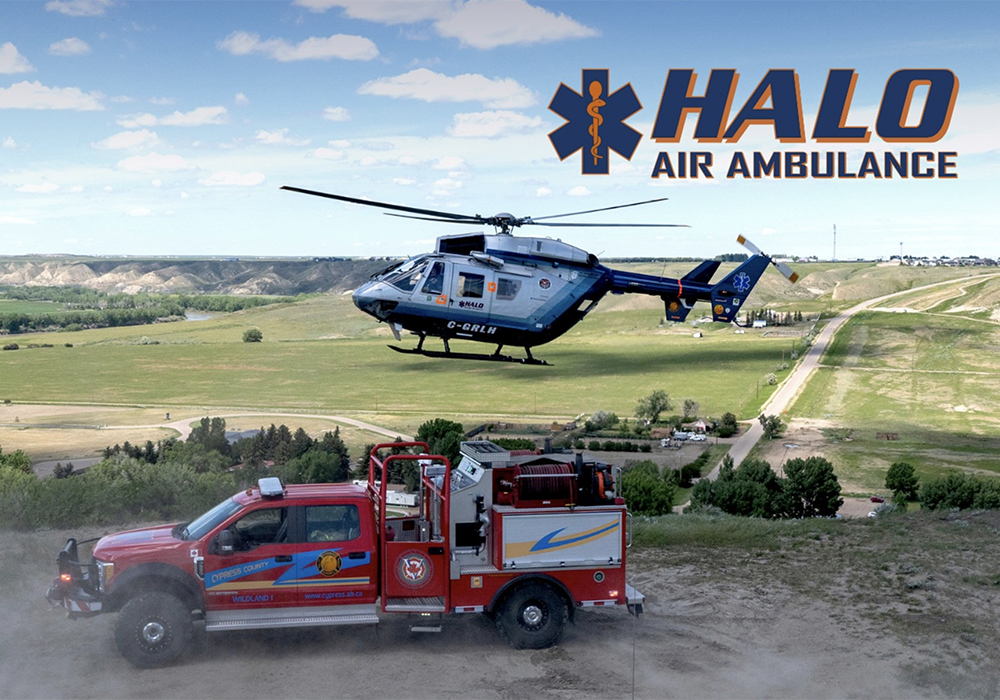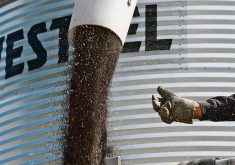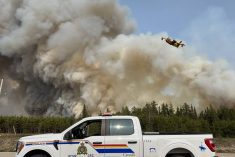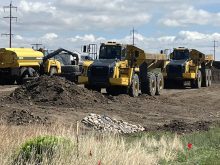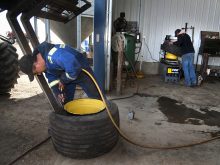It’s been a 15-year turbulent lead-up to the Alberta government’s announcement of funding for southern Alberta’s Helicopter Air Lift Operation (HALO).
The air rescue service came to the brink of disbanding several times but now that appears to be over.
“For the first time, HALO will be offered guaranteed funding and a contract with Alberta Health Services — moving from a fee-for-services model to a million dollars in annual guaranteed funding,” Alberta Premier Jason Kenney announced March 31.
Read Also

Why feds imposed EV tariffs
Moe and Kinew have a fight on their hands when it comes to eliminating the EV tariff. Canada has to worry about pissing off the U.S. and Mexico and hundreds of thousands of auto workers.
“Finally, we got the government onside,” said HALO board chair Dale Thacker of the funding announcement at the service’s hanger at the Medicine Hat Regional Airport.
Launched in 2007 as a one-year pilot project based out of Medicine Hat, HALO targeted a gap in the service provided by STARS rescue service which lacked the ability to reach southeastern Alberta without refueling from its base in Calgary.
“We didn’t happen because we wanted to fly helicopters. There was a need,” said Thacker. “It’s not that STARS isn’t a great organization, it’s that STARS can’t break the laws of physics. Helicopters don’t do distance very well at all.”
The announcement also included a $2 million annual investment to Fort McMurray-based Helicopter Emergency Rescue Operation (HERO) and comes on the heels of Alberta’s commitment to double the funding of STARS to $15 million.
While HALO had gone from a strictly donations-based service to a pay-for-service model that saw the operation paid for each call it responded to, it’s the financial support of the community which kept the helicopter service in the air as well as lifting the spirits of those involved.
“The kids from the 4-H clubs were giving us more money than the Alberta government was,” said Thacker of the situation leading up to the government’s funding commitment. “Kids understood this was important and they had gone to make the extra effort to raise a calf and sell it.”
Those efforts at auction would be amplified by the reselling of a steer several times over by those in the ranching community.
“You walk on the streets and people throw a hug on you and says, ‘thank you. You save my life,'” said Thacker of the reason to keep the service going. “Before HALO, people perished because they didn’t have access to timely medical intervention.”
He acknowledged that helicopter emergency services are by far the most expensive medical response vehicle but added the actual flying time is a tiny portion of the cost.
“Having that bird in the air is only six percent of our costs,” said Thacker. “People will pay for the helicopter flying. That’s easy to fundraise for. It’s hard to fundraise for insurance, hangers and all the other costs.”
The $1 million won’t cover all HALO’s funding operating expenses but it represents a large increase in government funding compared to the previous fee-for-service model, which saw the service receive $200,000 from flying 38 missions in the 2019-20 fiscal year.
The lead-up to the funding announcement was anything but certain as the government’s helicopter emergency medical services (HEMS) report launched in early 2020 concluded last year the province should move to a single provider, STARS.
With the government awash with increasing oil revenue set to fill provincial coffers, Premier Kenney said during the funding announcement money would now be available for HALO.
“We were broker than broke,” said the premier regarding the first three years of the UCP government which faced record deficits. “That’s recovered. We have a strong economic recovery.”
As for the future of HALO, Thacker said they are hoping to expand their operations 24-7 throughout the year while adding another helicopter to its service.
Thacker also hopes a review of the EMS dispatch system will assist HALO in providing its emergency services.
Contact alex.mccuaig@producer.com


